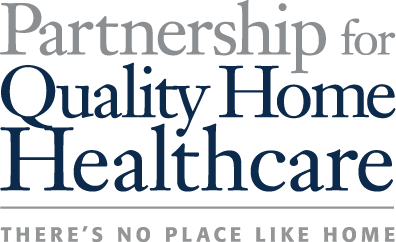June 6, 2012
Hospital At Home Program Praised as Model for Healthcare Delivery
Posted in: Press Release
WASHINGTON, DC — Hospital at Home – an innovative healthcare delivery system developed by the Johns Hopkins University School of Medicine and Public Health to provide acute care at a lower cost – further illustrates the importance of home healthcare in delivering clinical care to America’s seniors, improving patient care and reducing overall healthcare costs. The Partnership for Quality Home Healthcare today commended the program for its innovative approach to quality patient care and cost containment.
The subject of a new June 2012 Health Affairs profile, the Hospital at Home program at Presbyterian Healthcare Services in Albuquerque, New Mexico, has achieved clinical outcomes among at-home patients similar to, or better than, patients receiving inpatient care. Shorter patients stays, reduced clinical testing and improved patient outcomes have generated significant costs savings when compared to traditional acute care settings.
Between October 2008 and April 2012, Hospital at Home reduced costs by 19 percent for at-home patients receiving care similar to patients who chose inpatient care.
“Hospital at Home is an extraordinary example of the clinical and fiscal implications clinically appropriate home healthcare services can have on a healthcare delivery system and the patients it serves,” stated Billy Tauzin, senior counsel to the Partnership for Quality Home Healthcare. “Innovative delivery systems like Hospital at Home are what our nation’s healthcare system needs to deliver patient-preferred, high-quality care at a lower cost.”
The Hospital At Home program is designed for patients who prefer to receive care at home when clinically appropriate. This program demonstrates that acute-level care for specific diagnostic conditions can be safely and effectively provided in the home setting. The Presbyterian program targets specific diagnostic groups based on appropriateness for at-home care and acute care admissions, including conditions such as chronic obstructive pulmonary disorder, community-acquired pneumonia and pulmonary embolism. By targeting an aging patient population and those living with chronic disease, the program is able to identify patients who can benefit most from the at-home care program.
In addition to achieving excellent patient outcomes and reducing costs, Hospital at Home patients reported higher overall patient satisfaction than patients receiving inpatient care. Based on the success of Hospital at Home, Presbyterian Healthcare Services has developed additional home healthcare programs for reducing hospitalizations and managing chronic illness.
“Hospital at Home is representative of what healthcare reform is attempting to achieve – a high-quality clinical program that provides patient-centric, individualized care, while making the most effective and efficient use of the healthcare dollar,” the Health Affairs contributors concluded.
